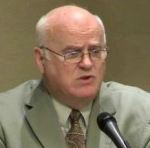
The Electoral College
Podcast: Download
Subscribe: Apple Podcasts | RSS | More
Welcome to Home Front! Today we have Tara Ross. Tara is a mother, wife, writer, and retired lawyer. She is the author of Enlightened Democracy: The Case for the Electoral College, co-author of Under God: George Washington and the Question of Church and State and her latest book, which we are talking about today called: We Elect A President—the story of our electoral college.
A lot of people don’t understand how presidential elections work. On today’s show we talk about the electoral college in a way you’ve never heard it explained before and how your vote can make a difference, even if you are voting off label.




5 Comments
otto
Because of state-by-state winner-take-all laws, not mentioned, much less endorsed, in the Constitution. . .
In the 2012 presidential election, 1.3 million votes decided the winner in the ten states with the closest margins of victory.
One analyst is predicting two million voters in seven counties are going to determine who wins the presidency in 2016.
With the end of the primaries, without the National Popular Vote bill in effect, the political relevance of three-quarters of all Americans is now finished for the presidential election.
In the 2016 general election campaign
As of Sept 23, half (77 of 153) of the presidential and vice-presidential campaign events between the nominating conventions and the first debate were in just 4 states (Pennsylvania, Florida, North Carolina, and Ohio).
88% of the events (135 of the 153) were in the 11 states identified as closely divided “battleground” states by Politico and The Hill. 29 states have been totally ignored.
In the 2012 general election campaign
38 states (including 24 of the 27 smallest states) had no campaign events, and minuscule or no spending for TV ads.
More than 99% of presidential campaign attention (ad spending and visits) was invested on voters in just the only ten competitive states..
Two-thirds (176 of 253) of the general-election campaign events, and a similar fraction of campaign expenditures, were in just four states (Ohio, Florida, Virginia, and Iowa).
otto
Because of state-by-state winner-take-all laws, not mentioned, much less endorsed, in the Constitution. . .
Issues of importance to non-battleground states are of so little interest to presidential candidates that they don’t even bother to poll them individually.
Charlie Cook reported in 2004:
“Senior Bush campaign strategist Matthew Dowd pointed out yesterday that the Bush campaign hadn’t taken a national poll in almost two years; instead, it has been polling [the then] 18 battleground states.”
Bush White House Press Secretary Ari Fleischer acknowledging the reality that [then] more than 2/3rds of Americans were ignored in the 2008 presidential campaign, said in the Washington Post on June 21, 2009:
“If people don’t like it, they can move from a safe state to a swing state.”
Over 87% of both Romney and Obama campaign offices were in just the then 12 swing states. The few campaign offices in the 38 remaining states were for fund-raising, volunteer phone calls, and arranging travel to battleground states.
otto
Because of state-by-state winner-take-all laws, not mentioned, much less endorsed, in the Constitution. . .
A candidate can win the Presidency without winning the most popular votes nationwide. This has occurred in 4 of the nation’s 57 (1 in 14 = 7%) presidential elections. The precariousness of the current state-by-state winner-take-all system of awarding electoral votes is highlighted by the fact that a difference of a few thousand voters in one or two states would have elected the second-place candidate in 4 of the 15 presidential elections since World War II. Near misses are now frequently common. There have been 7 consecutive non-landslide presidential elections (1988, 1992, 1996, 2000, 2004, 2008, and 2012).
537 popular votes won Florida and the White House for Bush in 2000 despite Gore’s lead of 537,179 (1,000 times more) popular votes nationwide.
A difference of 60,000 voters in Ohio in 2004 would have defeated President Bush despite his nationwide lead of over 3 million votes.
In 2012, a shift of 214,733 popular votes in four states would have elected Mitt Romney, despite President Obama’s nationwide lead of 4,966,945 votes.
After the 2012 election, Nate Silver calculated that “Mitt Romney may have had to win the national popular vote by three percentage points on Tuesday to be assured of winning the Electoral College.”
otto
Because of state-by-state winner-take-all laws, not mentioned, much less endorsed, in the Constitution. . .
Policies important to the citizens of non-battleground states are not as highly prioritized as policies important to ‘battleground’ states when it comes to governing.
“Battleground” states receive 7% more presidentially controlled grants than “spectator” states, twice as many presidential disaster declarations, more Superfund enforcement exemptions, and more No Child Left Behind law exemptions.
Compare the response to hurricane Katrina (in Louisiana, a “safe” state) to the federal response to hurricanes in Florida (a “swing” state) under Presidents of both parties. President Obama took more interest in the BP oil spill, once it reached Florida’s shores, after it had first reached Louisiana. Some pandering policy examples include ethanol subsidies, steel tariffs, and Medicare Part D. Policies not given priority, include those most important to non-battleground states – like water issues in the west.
The interests of battleground states shape innumerable government policies, including, for example, steel quotas imposed by the free-trade president, George W. Bush, from the free-trade party.
Parochial local considerations of battleground states preoccupy presidential candidates as well as sitting Presidents (contemplating their own reelection or the ascension of their preferred successor).
Even travel by sitting Presidents and Cabinet members in non-election years is skewed to battleground states
otto
A survey of Missouri voters showed 75% overall support for the idea that the President should be the candidate who receives the most popular votes in all 50 states.
The National Popular Vote bill would replace state winner-take-all laws that award all of a state’s electoral votes to the candidate who get the most popular votes in each separate state (not mentioned in the U.S. Constitution, but later enacted by 48 states), in the enacting states.
The bill retains the constitutionally mandated Electoral College and state control of elections, and uses the built-in method that the Constitution provides for states to make changes. It ensures that every voter is equal, every voter will matter, in every state, in every presidential election, and the candidate with the most votes wins, as in virtually every other election in the country.
Under National Popular Vote, every voter, everywhere, would be politically relevant and equal in every presidential election.
Every vote would matter in the state counts and national count.
The bill would take effect when enacted by states possessing a majority of the electoral votes—270 of 538.
All of the presidential electors from the enacting states will be supporters of the presidential candidate receiving the most popular votes in all 50 states (and DC)—thereby guaranteeing that candidate with an Electoral College majority.
The bill was approved this year by a unanimous bipartisan House committee vote in both Georgia (16 electoral votes) and Missouri (10).
The bill has passed 34 state legislative chambers in 23 rural, small, medium, large, red, blue, and purple states with 261 electoral votes.
The bill has been enacted by 11 small, medium, and large jurisdictions with 165 electoral votes – 61% of the 270 necessary to go into effect.
NationalPopularVote